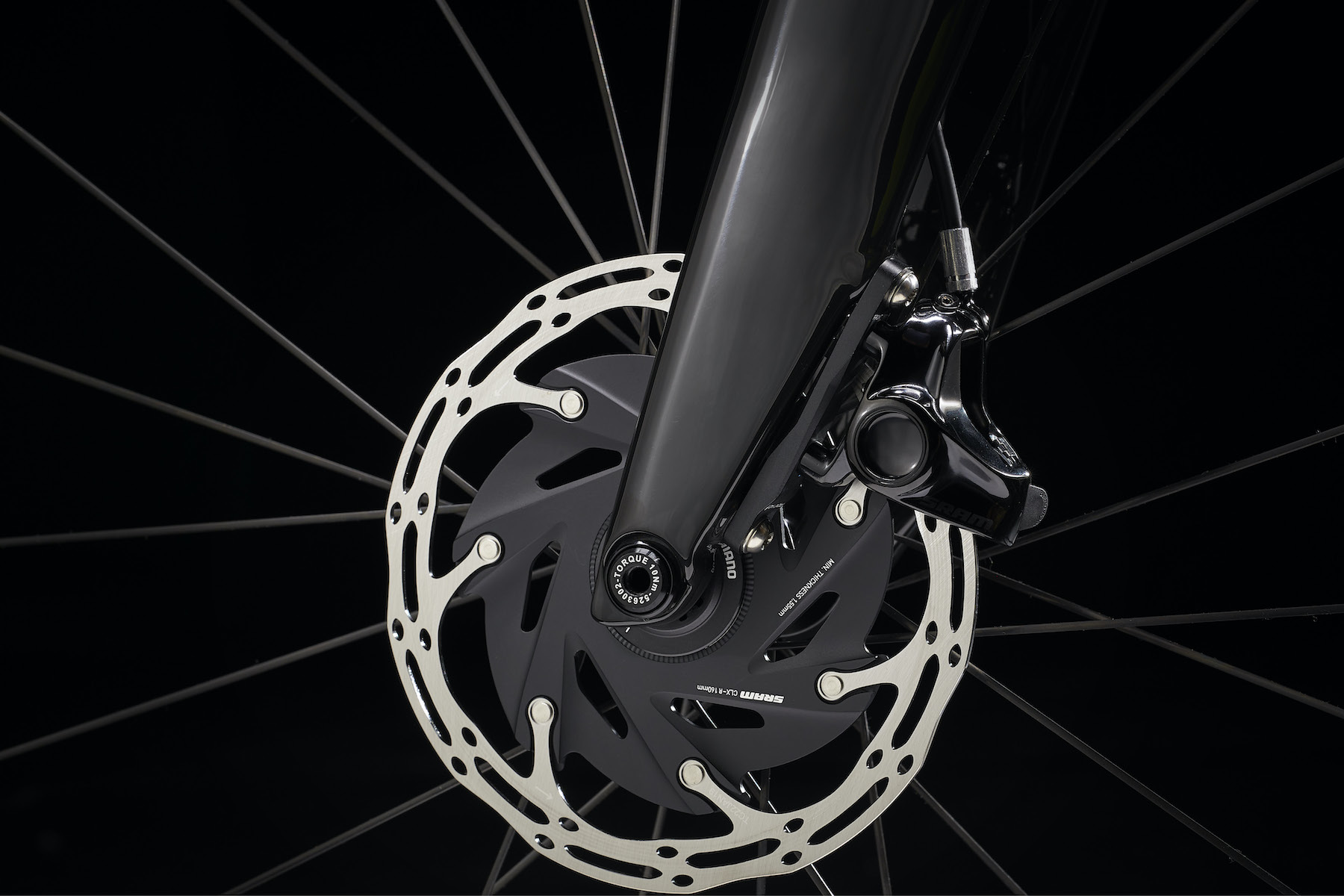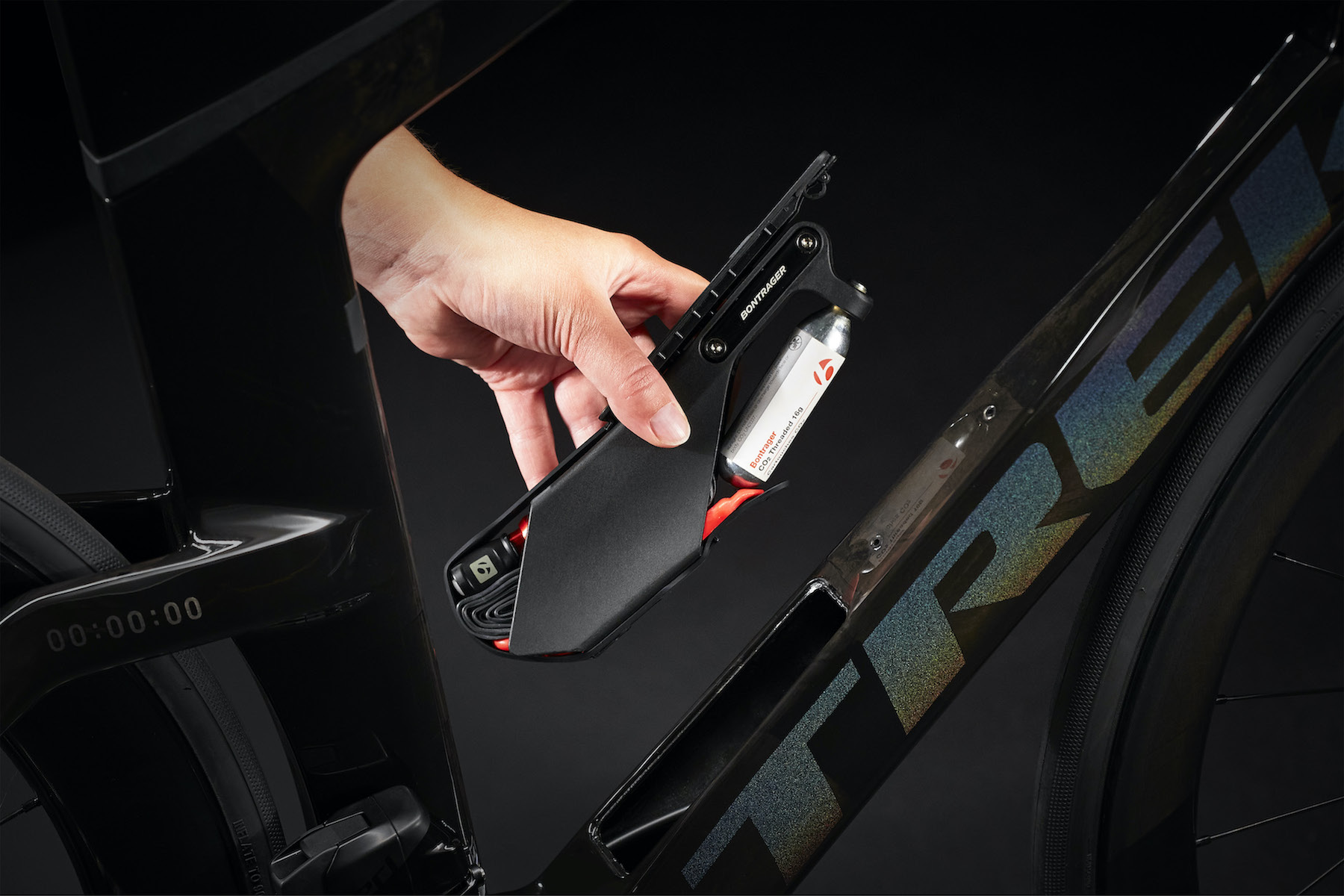Trek Speed Concept SLR 9 review
The latest iteration of the legendary Speed Concept is here, and Trek says it’s the fastest bike it’s ever tested. Should you splash out? Jack Sexty takes this superbike for a spin…

It’s taken over seven years for Trek to overhaul the Speed Concept, with the finished bike coming after “thousands” of computer-generated iterations and wind tunnel trips to validate what Trek says is “the fastest in its class”.
Trek tells us it experimented with ideas such as beam-shaped frames, but ultimately a more ‘traditional’ double-diamond was more structurally efficient and aero when coupled with the new lowered chainstays. The design also better accommodates new down tube storage and hydration.
It means the redesign doesn’t appear radical, but look closer and you’ll see disc brakes, a new cockpit, integrated top tube storage and the addition of Trek’s IsoSpeed system. The latter is essentially the ‘decoupling’ of the top and seat tubes to add compliance, with Trek extending this further out than on its road bikes to match a triathlete’s more aggressive position. Trek claims the Speed Concept is a huge 30% more compliant, which should leave you less fatigued for the run.
This top-end version costs a huge £12,100, so all mod cons are included, such as a power meter with the SRAM electronic groupset. The ‘cheapest’ Speed Concept with SRAM Rival is £8,100, which still gets you largely the same finishing kit with a slight weight penalty.
On the subject of weight, our size medium test bike is an impressive 8.6kg. Trek says the frameset is lighter than before, with the frame and fork optimised for disc brakes using Trek’s super light 800 Series OCLV carbon.
On a bike this expensive, we were disappointed that base bar shifters weren’t included, which is a useful addition for variable courses. It turned out that ongoing pandemic-related supply chain issues meant that Trek couldn’t source any for our test bike, but future versions will have that option. Speed Concept bikes with Shimano Di2 groupsets are already shipping with base bar shifters.
Headline claims

Talking geometry is somewhat moot with bikes this adjustable, as the new cockpit allows for thousands of fit combinations. Using just Allen keys, the extensions can be adjusted fore and aft, there’s countless armrest positions and you get plenty of riser blocks to adjust stack height. For travel, the whole cockpit can be disassembled without having to move your dialled in bars at all.
Trek’s headline aero claim is that the Speed Concept saves six minutes on the Kona bike course compared to the previous iteration. And while the brand admits real-world testing didn’t take place in Kona, it did use a life-sized mannequin in the wind tunnel to get “apples-to-apples” comparisons. Results showed the new bike was faster at all yaw angles and this was backed up by real-world testing.
A common bugbear when bike brands boast about aerodynamics is that wind tunnel speeds are outrageously fast (sometimes up to 50km/h), way beyond what mortals, or even some pros average.
It’s therefore refreshing that Trek’s aerodynamicist John Davis says testing shown time savings actually increased at slower speeds. Although anyone considering buying this bike will probably be pretty useful on it, it’s good to know you don’t have to be world-class to benefit.
Trek Speed Concept SLR 9 performance and comfort

Without a wind tunnel at our disposal, we took to the road in early spring to see if the ride matched up to the marketing spiel… and it certainly delivered. Mounting a triathlon superbike for the first time can be daunting, but the Speed Concept has that ‘familiar’ ride feel we look for.
By this, we mean we felt confident grabbing the extensions and staying there, without the bike feeling twitchy and leaving us reaching for the brakes. Being able to easily dial our position helped, as our preferred pad width, extension length and the height between base bars and extensions could be set perfectly.
Hydraulic discs help to inspire confidence, with far superior braking power compared to rim brakes hiding in awkward places on the previous Speed Concept.
Considering this rider hasn’t hammered triathlon bikes for hours over winter, it was noticeable how fresh we felt after rides of up to 90km. Whether Trek’s IsoSpeed system really does make the difference is something we cannot definitively prove, but we can’t remember transferring from our road bike to triathlon bike for long weekend rides so seamlessly in many triathlon seasons past.
Our power numbers were what we’d expect, with average speeds that bit higher due to the aero efficiency afforded by the Speed Concept. Climbing performance was superb, with the bike feeling impressively agile and nippy on inclines.
We could wax lyrical about components, but they’re obviously very good on a 12k bike: SRAM Red eTap AXS shifts flawlessly (just missing those base bar shifters), the power meter is bulletproof, the Bontrager Hilo saddle super comfy and the Aeolus RSL 51 wheels strike an ideal balance between speed and controllable handling for changeable conditions. You can spec 75mm hoops through Trek’s bike builder (as pictured in the first image of this review), but for Kona and general year-round conditions the 51mm depth seems ideal.
Trek Speed Concept SLR 9 storage solutions

Of the proprietary storage solutions, the top tube storage and aero down tube bottle were a hit. Removable dividers in the top tube compartment make it easy to arrange nutrition and the silicone top means you can reach in easily.
The down tube bottle is designed mostly to fill up Trek’s between-the-arms bottle, something sadly not included with our test bike. What we can say is the down tube bottle slots back in easily and holds plenty of liquid at 750ml.
We were less enthused by the hidden down tube storage, released by removing the bottle and clicking it out. It holds a tube, CO2 and multi-tool, but it’s a tight fit and could take precious extra seconds to put it all away again if you puncture in a race. We’d prefer a solution that doesn’t require the removal of other parts to access, but nevertheless it’s a cleaner solution than adding extra bags.
Trek Speed Concept SLR 9 verdict
Overall, we loved our time on the Speed Concept. The improved comfort, storage features and adjustability alone make it worth the wait over the previous version. Add in the claimed speed benefits, and you have a superbike that’s up there with the very best in 2022.
It’s a shame the lowest spec model currently available is over £8,000, and we’d like to see more affordable trickle-down versions like Canyon and Orbea offer. Still, if you can afford it, the Speed Concept comes very highly recommended.
Verdict: An impressively fast and comfortable top-of-the-range triathlon bike that’s ready to race at the top level.
Score: 90%
Trek Speed Concept SLR 9 full specs

Price: £12,100
Weight: 8.6kg (size medium)
Frame: Trek 800 Series OCLV Carbon
Fork: SC full foil carbon
Gears: SRAM RED eTap AXS, 48/35, 10-33
Brakes: SRAM S-900 Aero
Wheels: Bontrager Aeolus RSL 51
Finishing kit: Speed Concept mid-rise bar/stem, Bontrager Hilo Pro Carbon saddle, Bontrager R3 Hard-Case Lite 25c tyres, Speed Concept Down Tube Bottle and Bottle Cage
Highs
Excellent handling, light for a triathlon bike, wickedly fast.
Lows
Extremely expensive, flat kit storage isn’t the best solution we’ve seen.
Buy if
Money is absolutely no object to achieve your triathlon goals.




